Last week we explored feet and the boots that cover them. This week I’m going to the other end of the body and share with you some hats I’ve discovered over the years.
A hat is a noun and is defined as a shaped covering for the head worn for warmth, sun protection, as a fashion item, or as part of a uniform.
The concept of a broad-brimmed hat with a high crown worn by a rider on horseback can be seen as far back as the Mongolian horsemen of the 13th century. The hat has a tall crown that provides insulation, and a wide brim that provides shade.
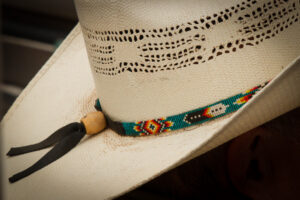 This image was taken near Canyon de Chelly and the beautifully beaded hatband caught my eye more than the hat itself. I was there on an Arizona Highways Photo Workshop and this hat belonged to our guide.
This image was taken near Canyon de Chelly and the beautifully beaded hatband caught my eye more than the hat itself. I was there on an Arizona Highways Photo Workshop and this hat belonged to our guide.
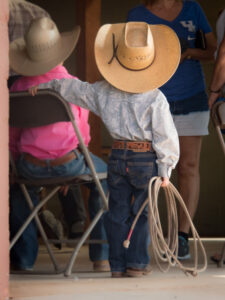 This little roper and his hat were taken at the annual Babbit Ranches Colt Sale held in July.
This little roper and his hat were taken at the annual Babbit Ranches Colt Sale held in July.
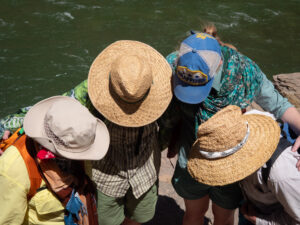 River trip hats are as unique as the individual and a lifesaving part of the needed gear, especially on summer trips through Grand Canyon.
River trip hats are as unique as the individual and a lifesaving part of the needed gear, especially on summer trips through Grand Canyon.
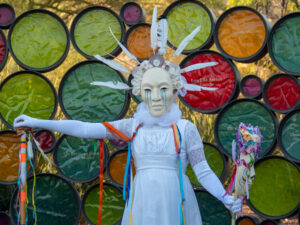 It may be that this “hat” image lies more in the headdress genre but either way, the outfit is magnificent. This image was taken at a Dia de los Muertos celebration at the Phoenix Desert Botanical Gardens in 2019.
It may be that this “hat” image lies more in the headdress genre but either way, the outfit is magnificent. This image was taken at a Dia de los Muertos celebration at the Phoenix Desert Botanical Gardens in 2019.
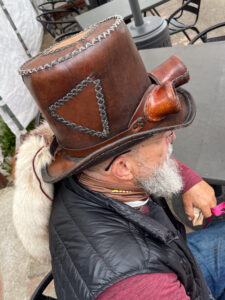 Following a morning at the Bolinas, CA tidepools I encountered this character in town at the local coffee shop. He said he got this leather tophat years ago at a Renaissance Fair. He added the fox tails off the back.
Following a morning at the Bolinas, CA tidepools I encountered this character in town at the local coffee shop. He said he got this leather tophat years ago at a Renaissance Fair. He added the fox tails off the back.
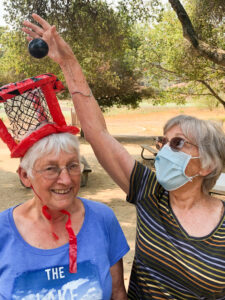 My mom with her basket hat at a family picnic a couple of years ago. Leave it to her sister to slam-dunk her head!
My mom with her basket hat at a family picnic a couple of years ago. Leave it to her sister to slam-dunk her head!
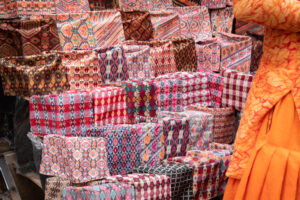
Dhaka ko Topi literately means a “headgear made of Dhaka cloth”, a fine cotton cloth once exclusively imported from Dhaka, the present-day capital of Bangladesh.
The Dhaka topi was a part of the Nepalese national dress and a symbol of Nepalese nationality. It became popular during the reign of King Mahendra, who ruled between 1955 and 1972 and made wearing a Dhaka topi mandatory for official photographs for passports and documents. Dhaka Topis are given away as gifts during festivals. They were also worn by government officials as a part of the national dress.
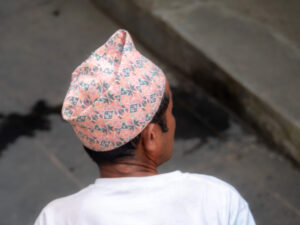
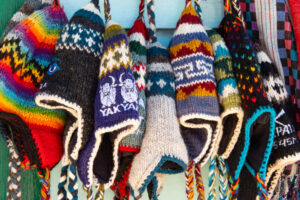 During our 2018 hike to Everest Base Camp, we came across many hats like the ones above for sale and on the heads of many locals as we rose in elevation and the temperatures cooled.
During our 2018 hike to Everest Base Camp, we came across many hats like the ones above for sale and on the heads of many locals as we rose in elevation and the temperatures cooled.
When I looked up their origin all I could find was how they originated in the Andes under the name Chullo. Chullo is an Andean style of hat with earflaps, made from vicuña, alpaca, llama, or sheep’s wool. Alpaca has wool-like qualities that help to insulate its wearer from the harsh elements in the Andean Mountain region. Chullos often have ear flaps that can be tied under the chin, to further warm the wearer’s head.
Hats have been used in the Andean Mountain region by indigenous peoples for thousands of years. Wearing different types and colors has significance among certain Andean natives. According to Peruvian historian Arturo Jiménez Borja, the Chullo has its origins in the cultural exchange between Spaniards, who incorporated elements of their barrettes and the original hat of the Andeans.
I imagine all of these things are also true in the Himalayan region of Nepal and the hats are made out of Yak fur.
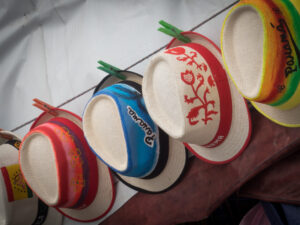 These hats were found in Panama City, Panama in 2017.
These hats were found in Panama City, Panama in 2017.
Although commonly called “Panama hat” in English, the hat has its origin in Ecuador. Beginning in the early to mid-1600s, hat weaving evolved as a cottage industry along the Ecuadorian coast as well as in small towns throughout the Andean mountain range. Hat weaving and wearing grew steadily in Ecuador through the 17th and 18th centuries. Straw hats woven in Ecuador, like many other 19th- and early 20th-century South American goods, were shipped first to the Isthmus of Panama before sailing for their destinations in Asia, the rest of the Americas, and Europe, subsequently acquiring a name that reflected their point of international sale—”Panama hats”—rather than their place of domestic origin.
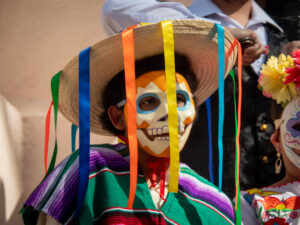
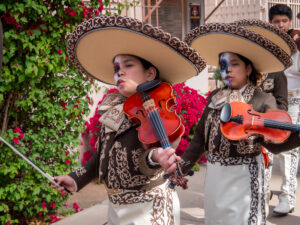
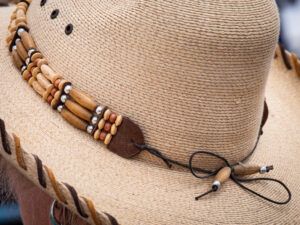 This was another cool hatband on a hat at the Colt Sale near Flagstaff.
This was another cool hatband on a hat at the Colt Sale near Flagstaff.
 On my one and only trip to Boston, I came across a vendor selling baseball caps. I was amazed at the variety of colors available!
On my one and only trip to Boston, I came across a vendor selling baseball caps. I was amazed at the variety of colors available!
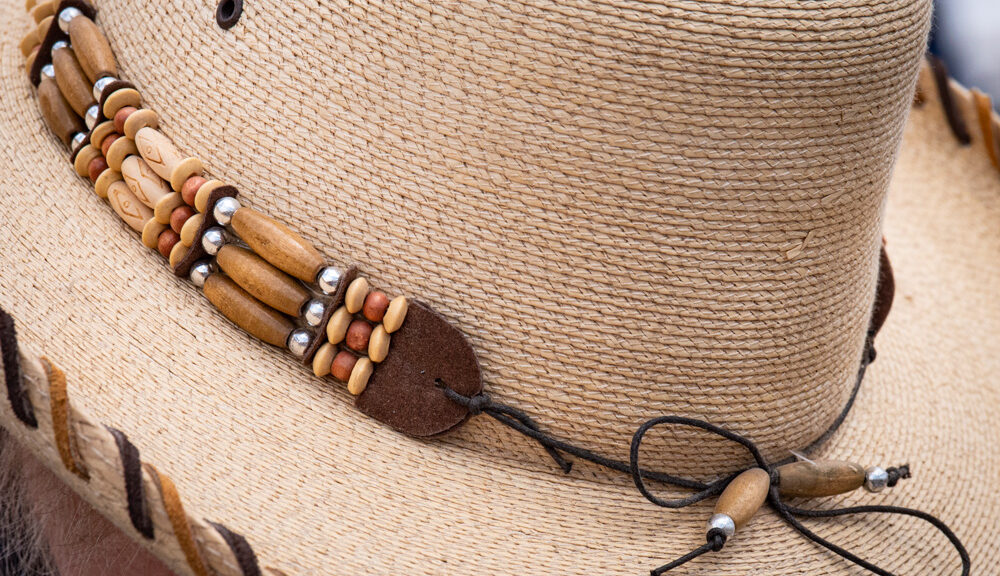
Not only great photos but excellent historical reference information! You never cease to amaze me! Thank you!
You are having so much fun! And letting us join in is great! Love the historical notes that broaden our knowledge and appreciation,
I loved the combination of this series of hands, then boots and now hats. ??
Woohoo! You’ve done it again! Such interesting facts and history about hats.
Thanks for sharing your “finds” from your many excursions around the planet—I’m so happy that you carry a camera everywhere you go! Great eye!